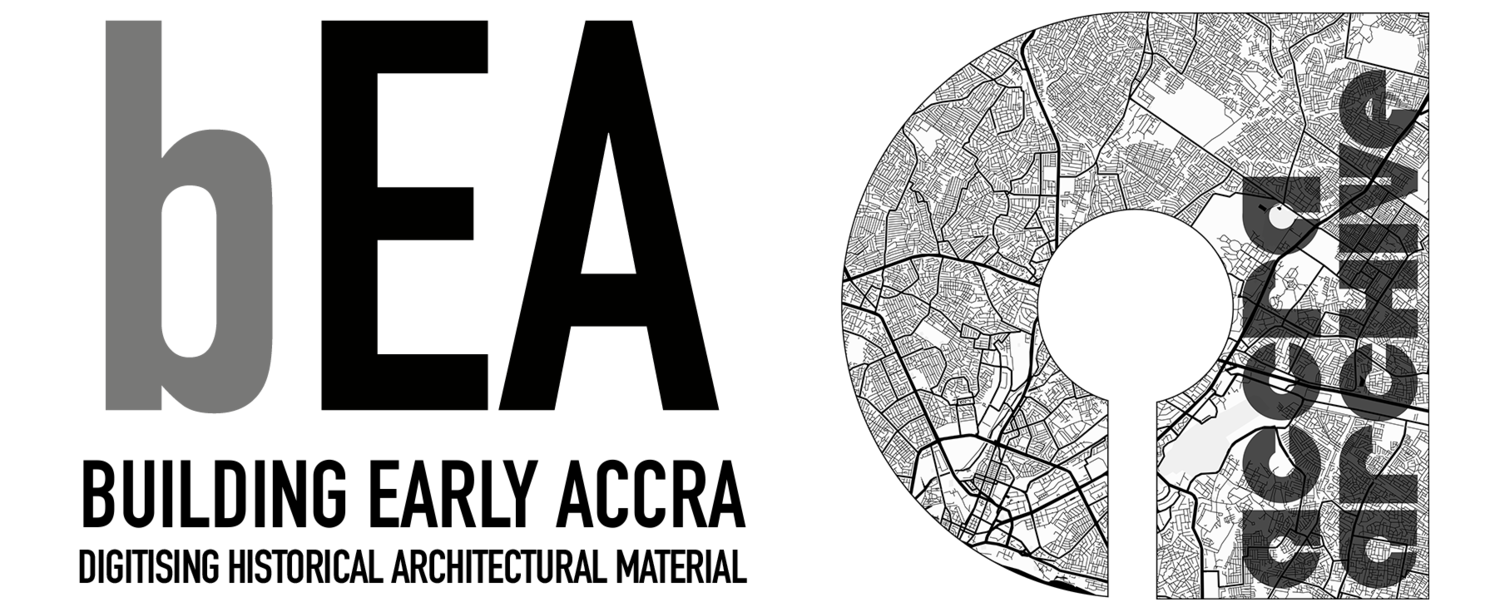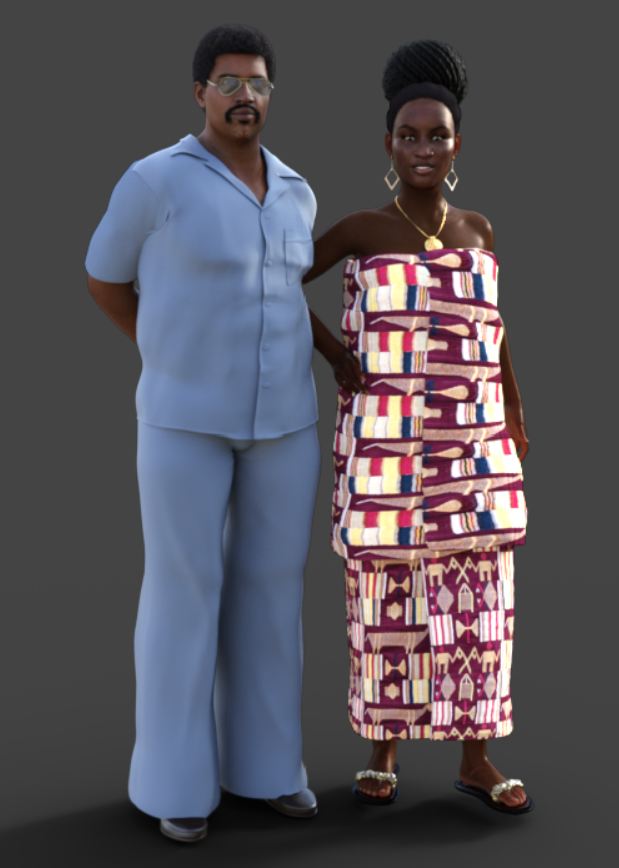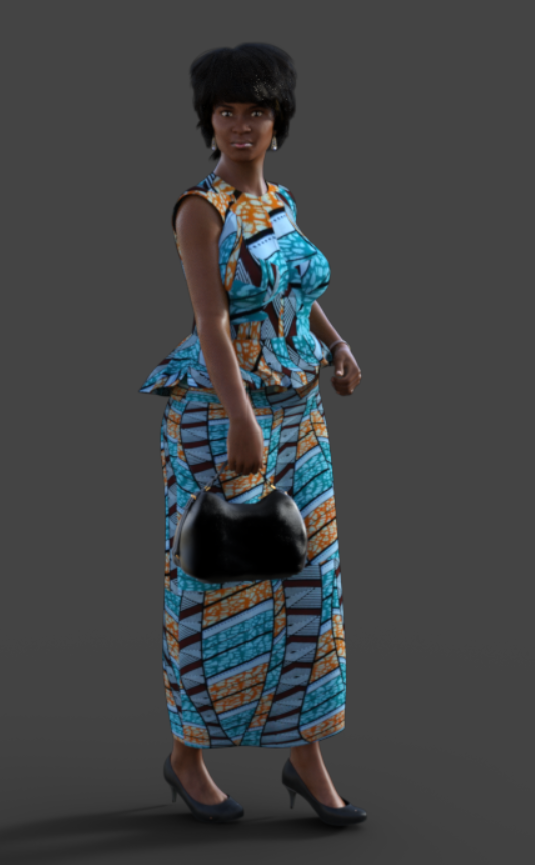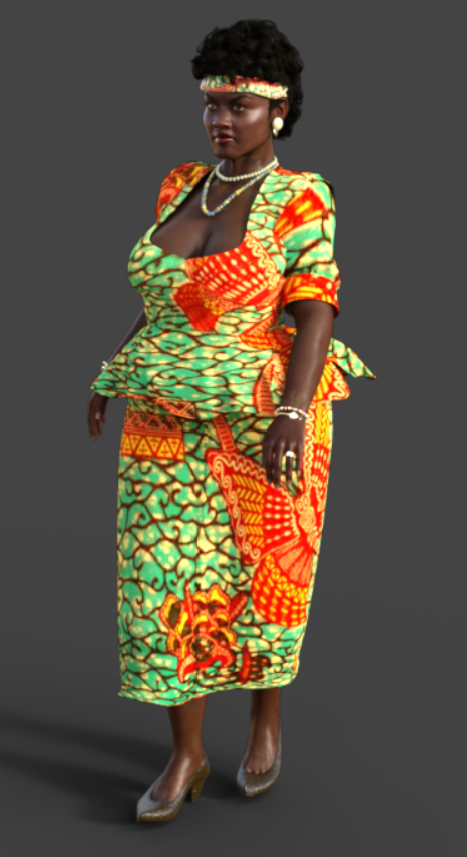Ghana Fashion History in 3D
Making Art with Ghanaian Archives
By Asaaba
I combine my artistic talents, my skills in 3D art with my love for Ghanaian history by creating 3D characters and dressing them up in Ghanaian fashion styles. I research and study images from archives intently, noting unique features and trends and making sure to reflect these in my art.
My first images were based on the 1980s in Ghana, which I shared on Twitter for fun. Due to the great response I received, and because I enjoyed the process so much, I had my followers decide which decade to do next. I have created art with fashion inspiration from as early as the 1960s and as recently as the 2010s. In my art, I try to capture everything from the hairstyles, shoes, and even poses!. This is why I get really excited when people reply and tell me that they have seen similar fashions and poses in old family photos. My research paid off!
3D Art of 1980s Ghana Woman by Asaaba
3D Art of 1970s Ghana Couple by Asaaba
I have always had an artistic side to me. Over the years, I would draw, write stories, sew designs onto old T-shirts, write poems and songs, and produce beats. In 2017, a friend of mine introduced me to a software called Daz3D and opened a whole new world of creativity and art via 3-dimensional modelling. I initially created fantasy characters, but my interest has recently been in recreating real people.
Siblings after Sunday church service, 1934. Photograph by DeoGratias Studios, Accra
I’ve also always been interested in the history of the Gold Coast and Ghana. I remember my mum telling me about her childhood; about her mother, an illiterate but enterprising Makola trader; about her great-grandmother, a traditional priestess who could boast of clients in government and the intelligentsia; and about how life was under Nkrumah. This fascination with history began when I was about 5 years old and flipping through a red leather-bound Encyclopedia Britannica, looking at images of historical figures and listening to my parents read the lengthy paragraphs to me. I loved looking at the few old family photos we had and I would ask about the people and places in those old photographs.
In 2008, I left Ghana and went to university in Canada and was extremely homesick. I constantly looked up music videos, old movies, even articles about Nkrumah, stories about independence day and the like, just to keep home alive in my mind. There wasn't much material about Ghana online at the time, but as people uploaded more content, YouTube and GhanaWeb became my main source of Ghana-related material online.
In the mid-2010s, I began to take my learning more seriously. I followed Facebook friends who dedicated their entire pages to Ghanaian history and learned about some of the women who had been involved in the Ghana Independence struggle and was shocked to learn that so many of them had been erased from our histories. Women like Ruth Botsio, Hannah Kudjoe, Sophia Oboshie Doku, Dedei Ashikishan and Mabel Dove Danquah. I was proud to know that these women, and many more, had played a major role in the struggle for Independence in Ghana although there was very little information about them online.
Picture of Hannah Kudjoe with her great-niece, taken by her nephew, Peter Dadson.
Source: Wikipedia
Ruth Botsio, Image courtesy of Botsio family. Source NPR
A GhanaPost stamp bearing the image of Dedei Ashikishan
Sophia Oboshie Doku. Source: braperucci
Mabel Dove Danquah. Source: braperucci
Women dressing hair in The Gold Coast. Source: Basel Mission Archives
Through these Ghanaian history accounts, I also came across the Basel Mission's online archive which contains numerous images from the 19th and early 20th centuries in Ghana. I also learned about renowned Ghanaian photographers like James Barnor, J. K. Bruce Vanderpuije and Felicia Abban, Ghana's first female professional photographer. They photographed mostly the first half of the 20th century, documenting a people who had dignity and found joy in spite of the oppressions and indignities of colonization. I used Pinterest to curate some of the most interesting images according to the decades they were created in.
As I spent time examining the images, I began to notice fascinating things such as the beautiful hairstyles and clothing. Photos of people wearing Kaba and Slit were of particular interest to me so I decided to share what I had found on twitter. I made threads focusing on ‘150 years of women's hairstyles in Ghana’, ‘Ghana Kaba and Slit fashion’, and ‘150 years of Gold Coast/Ghana women's fashion’ Those threads were extremely well-received and I was happy to find out that other people were also interested in these topics. Some people online were even able to recognise people in some of these historical photographs. It was a very small step, but in a way, I feel I was able to help humanize some people who lived in Ghana before us.
If I had to choose a favourite decade for Ghana fashion - they're all so unique and stunning! - I'd go for the 1890s. Their garments were mostly free-flowing, long skirts; loose and frilly blouses; and the most beautiful gilded tekua hairstyles.
Fashion has evolved so much but one thing popped up in each decade I worked on is the kaba and slit. I first noticed the images when compiling the 1880s to 1890s period. Along with these garments, women mostly wore their hair braided, and they were decorated with gold or tied in a cloth, barely hiding the large braids. Some of the kaba and slit styles have survived to this day and remain a staple in the Christian Women's Fellowship circles.
1960s Man by Asaaba
1960s Woman in Kaba and Slit by Asaaba
1980s Woman in Kaba and Slit by Asaaba
There is still so much to discover about the Gold Coast and Ghana. I hope more images are digitized so we can see the realities of our ancestors. My 3D Art is just a fun personal project, but it highlights the fashion and beauty of very real people - people who adorned themselves and found their beauty.
2010s Ghana Men’s Fashion by Asaaba
2010s Ghana Women’s Fashion by Asaaba
ABOUT THE AUTHOR:
Asaaba is a history lover, occasional 3D artist, and feminist. She is a proud Ga woman and enjoys learning new things about Accra and other parts of Ghana. Asaaba spends her free time tweeting about everything and nothing, napping and dreaming up her next 3D piece. Follow her on Twitter and on Pinterest














